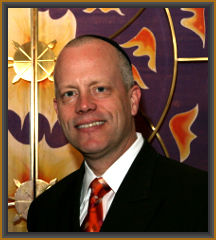
 |
Other New Years December 30, 2020
Dear Holy Friends, I hope this correspondence finds you doing well and in good health. I know that many of us could not wait to say goodbye to the year 2020. It was a less than ideal year, but thank God, we made it through the challenges together and collectively, and we can now look forward to a happier and healthier 2021. For several years, I taught World Religions at Bergen County Community College. It was a great experience for me. I had obtained my doctorate in education and my wife suggested that, because their institution was geographically “in our backyard,” I should approach them for a teaching position. Sure enough, I went in to meet with the chair of the Department of Religion and Philosophy and he offered me a job on the spot. One semester, after having completed a survey course with the students on the fundamentals of the founding religions (Judaism, Christianity, Buddhism, Hinduism, and Islam), we created a chart illustrating how these diverse religious traditions have much in common. So, as we begin this new calendar year, let’s take a look at two other New Years, Chinese New Year and the original Jewish New Year of Peasch (the first month of the Hebrew calendar), and explore their similarities. One of the oldest traditions celebrated today is Chinese New Year, which is believed to have originated over 3,000 years ago, during the Shang Dynasty (our first Passover was also approximately 3000 years ago: post Ramses the Pharaoh). The holiday began as a way of celebrating the new beginnings of the spring planting (sounds like the agricultural description of Pesach in the Torah?) but it later became entangled with myth and legend (sounds like Pesach?). According to one popular tale, there was once a bloodthirsty creature called Nian (which is now the Chinese word for “year”) that preyed on villages every New Year. To frighten the hungry beast, the villagers took to decorating their homes with red trimmings, (sounds like Pesach with the Israelites painting the doorposts with blood to “scare away” the angel of death?), burning bamboo (sounds like burning of the chametz?) and making loud noises (insert Jews of any kind!). The ruse worked, and the bright colors and lights associated with scaring off Nian eventually became integrated into the celebration. Chinese New Year festivities traditionally last 15 days and tend to center on the home and the family (sounds like Pesach?). People clean their houses (sounds like Pesach?) to rid them of bad luck, and some repay old debts (or pay the kids to find the Afikoman, so the Seder can continue?) as a way of settling the previous year’s affairs. In order to encourage an auspicious start to the year, the Chinese also decorate their doors with paper scrolls and gather with relatives for a feast (sounds like the Seder?). Since Chinese New Year is still based on a lunar calendar (as is the Jewish calendar, primarily) that dates to the second millennium BC, the holiday typically falls in late January or early February, on the second new moon after the winter solstice. Each year is associated with one of 12 zodiacal animals (Chad Gad Ya?) including the rat, ox, tiger, rabbit, dragon, snake, horse, goat, monkey, rooster, dog, and pig (OK, definitely not Jewish!). On Chinese New Year’s Eve, families tend to gather for an enormous feast, complete with dumplings (Matzah ball soup anyone?) that resemble ancient coins from northern China and sticky rice cakes from southern China. Other traditional foods include: fish, which in multiple Chinese languages sounds like the word for “abundance;” tangerines, which sound like the word for “luck;” and uncut noodles, which signify a long life (we can insert a long list here of your choosing, but notice how the foods have meaning just like the Marror, Charoset, and Matzah each represent something at the Seder). Eight is a lucky number for the Chinese and their festive meal often consists of eight courses (our Seder meal also has definitively marked courses and the holiday itself is eight days long). In addition to eating, children receive red envelopes with money inside (sounds like Afikoman?), and nearly everyone in China lights off fireworks and firecrackers. The holiday then continues for another 15 days, lasting from the new moon to the full moon (almost all Jewish holidays begin at the full moon). And finally, just as we like to go home for Pesach, the Chinese like to go home for their New Year. In fact, Chinese New Year involves the world’s largest seasonal migration of people (an estimated 3.2 billion trips are taken over a six-week period). So, whether we are Jewish, Chinese, or both, or from another cultural or religious tradition, this comparison teaches us that we are all more alike than different. As we head into 2021, let us pray that all of humankind will work together to bring health, peace, happiness, prosperity, safety, security, and love to the entire world! B’Shalom,
Rabbi Eric L. Wasser, EdD
|